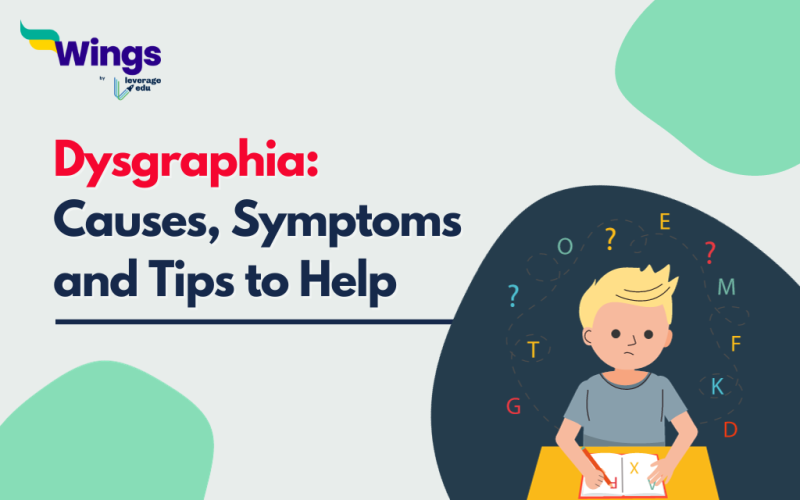Did you know that 1 in 5 children has a learning disability? Dysgraphia is one of the most common learning disabilities, affecting 10-30% of children. Have you ever seen a child struggling to write? They may be gripping their pencil too tightly, forming letters poorly, or erasing repeatedly. All this could be a sign of dysgraphia, a neurological disorder that affects handwriting. As a teacher, if you ever come across a student with dysgraphia you must be prepared to help the child. In this blog, we will help you understand the causes and symptoms of dysgraphia, and how can you help in overcoming it.
Also Read: Best Colleges for Students with Learning Disabilities in India
Table of Contents
Dyslexia: Definition, Long-Term Effects and Awareness
What is Dysgraphia?
Dysgraphia is a learning disability that affects writing. It can cause difficulty with handwriting, spelling, and grammar. Dysgraphia is not a sign of low intelligence or laziness. It is a neurological disorder that makes it difficult to coordinate the muscles needed for writing.
Also Read: Epilepsy Definition, Causes, Symptoms, and Treatment
Causes of Dysgraphia
The exact cause of Dysgraphia is still unknown, but it is comprehended to be a biologically based disorder with genetic and brain bases. Some risk factors for Dysgraphia include:
- Family history of dysgraphia or other learning disabilities
- Premature birth
- Low birth weight
- Neurological disorders, such as cerebral palsy or epilepsy
- Exposure to certain toxins during pregnancy or early childhood
Symptoms of Dysgraphia
Symptoms of dysgraphia can vary from person to person. Some common symptoms include:
- Difficulty forming letters and words
- Poor handwriting
- Slow writing speed
- Frequent erasing and rewriting
- Difficulty with spelling and grammar
- Difficulty spacing and aligning letters and words on paper
- Difficulty organizing thoughts on paper
Disability-Friendly Universities in the World
How to Diagnose Dysgraphia?
Dysgraphia is typically diagnosed by a team of professionals, including a psychologist, a speech-language pathologist, and a special education teacher. The team assesses the child’s writing skills, academic achievement, and overall development.
Explore more: BEd in Special Education: Colleges, Syllabus & Scope
How to Help Students With Dysgraphia? 5 Effective Tips
Here are five effective tips for teachers to help students with Dysgraphia:
- Teachers can provide accommodations to the students including a computer or tablet for writing assignments, giving them extra time to complete tests and quizzes, or providing them with handouts instead of requiring them to copy notes from the board.
- Teachers can try multisensory teaching methods. This means engaging students’ different senses in the learning process. For example, you could have students trace letters with their fingers in sand, or use clay to build letters.
- Teachers can break down writing assignments into smaller steps to help students feel less overwhelmed and make the task manageable. For example, you can break down an assignment into four steps: brainstorming, outlining, writing, and presentation.
- Teachers can provide feedback on ideas, not handwriting. When grading students’ work, focus on the content of their writing, not on the neatness of their handwriting. This will help students feel confident in their abilities and encourage them to continue writing.
- The most effective way to help students with Dysgraphia is to build a supportive classroom environment. Let students know that you are there to help.
Also Read: All About Teaching-Learning Material
Also Read: Bachelor of Special Education in India
Explore more topics to help your students
FAQs
Ans: Dysgraphia is a learning disability that affects writing. It can cause difficulty with handwriting, spelling, and grammar.
Ans: The exact cause of dysgraphia is still unknown, but it is comprehended to be a biologically based disorder with genetic and brain bases.
Ans: Teachers can create a supportive and inclusive classroom environment and provide them with opportunities to practice their writing skills in a relaxed and supportive setting.
Follow Leverage Edu for more interesting and informative articles on school education.
 One app for all your study abroad needs
One app for all your study abroad needs













